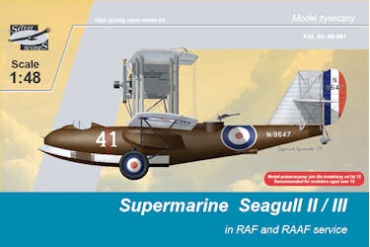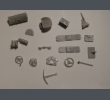Supermarine Seagull II - III
-
 Box - RAF / RAAF
Box - RAF / RAAF
-
 Box - IJNAF
Box - IJNAF
History
The prototype, which became known as the Seagull Mk I, was modified from an existing Supermarine Seal II in 1921. Only one aircraft was made. A Napier Lion II engine was fitted and there were modifications made to the nacelle. Produced from 1922, the production aircraft, the Seagull Mk II, had a Napier Lion III engine, and these were supplied to the Air Ministry and Royal Navy. A total of 25 were built, although some of these were later modified. The Seagull Mk III was the Australian version, built in 1925. These were similar to the Seagull II but with a Napier Lion V engine and radiators modified for tropical use. Nine of these were supplied to the Royal Australian Air Force, and one other Seagull II was built for Japan. Supermarine Seagull Mk II was used operationally as a fleet spotter. The Seagull II was the first British aircraft to be catapult launched in 1925. The crew was normally three (Pilot, Observer, and Radio-Operator).
Technical data:
Length: 11,5 m
Wingspan: 14,02 m
Heigth: 4,26 m
Power plant: Napier Lion III 12-cylinder water-cooled W-block piston engine, 367 kW (492 hp)
Max speed: 138 km/h
Endurance: 4,5 h
Service ceiling: 2,79 m
Armament: 1 × .303 in (7,7 mm) Lewis gun





























